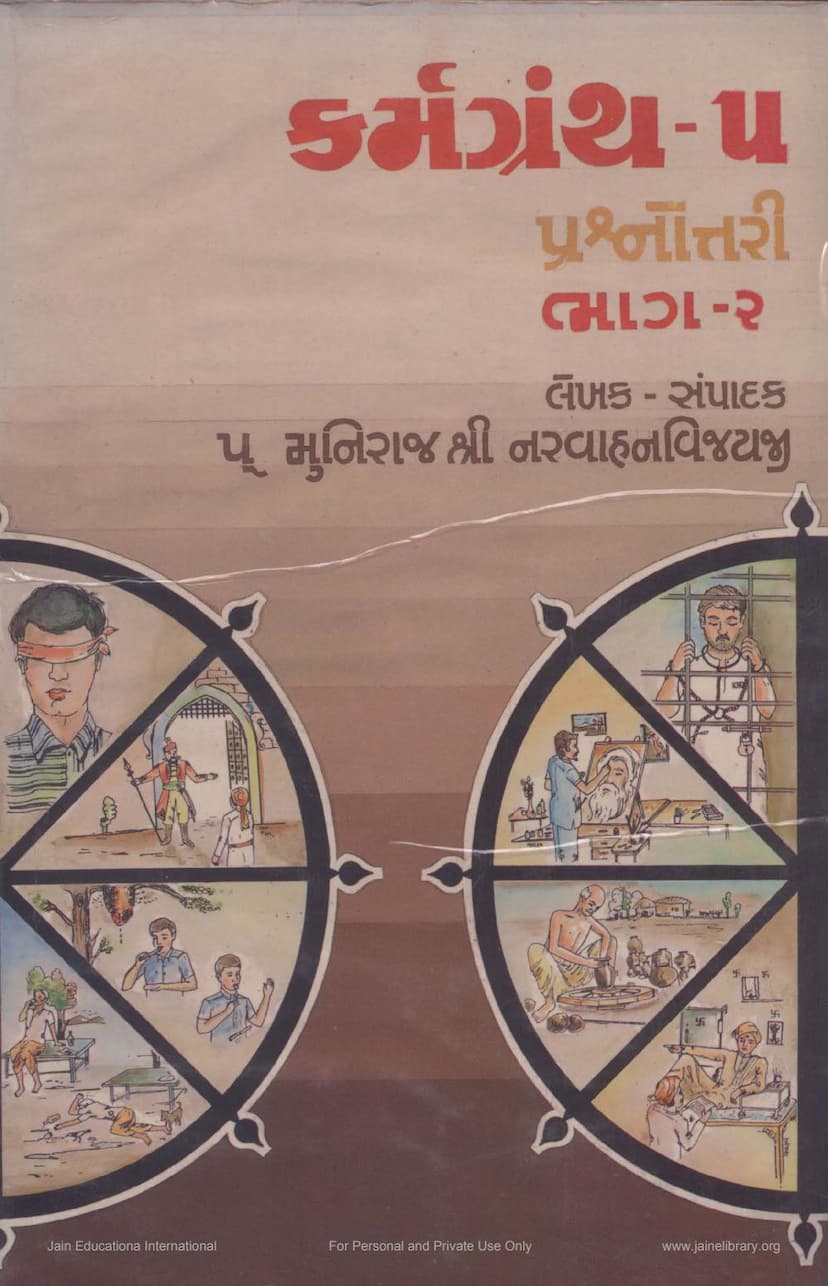Karmgranth 05 By 02 Prashnottari
Added to library: September 2, 2025

Summary
This document is the Gujarati text of "Karmgranth 05 by 02 Prashnottari" (Karma Grantha - 5, Question-Answer Part 2), authored and edited by Muni Shri Narvahanvijayji. The publisher is Fulabhai Ranchhodbhai Parivar.
The book is part of a series called "Prashnottari Granthamala" (Question-Answer Book Series), and this is publication number 12. The text is in Gujarati and consists of a question-and-answer format that delves deeply into the intricacies of Jain Karma theory.
Here's a breakdown of the content based on the provided pages:
Key Themes and Content:
- Focus on Karma Theory (Karmasiddhanta): The book is a detailed exposition of Jain karma theory, a central concept in Jain philosophy that explains the bondage and liberation of the soul.
- Question-and-Answer Format: The entire book is structured as a series of questions posed to the author/editor, followed by detailed answers. This format makes complex philosophical concepts more accessible to the reader.
- Detailed Explanation of Karma Types and States: The questions and answers cover various aspects of karma, including:
- Bandh-sthāna (States of Bondage): The different combinations and numbers of karmas that can be bound.
- Bhūyaskār Bandh (Increasing Bondage): Situations where the soul binds more karmas than before.
- Alpatar Bandh (Decreasing Bondage): Situations where the soul binds fewer karmas than before.
- Avasthit Bandh (Stable Bondage): Binding the same number of karmas.
- Avaktavya Bandh (Indescribable Bondage): Specific conditions related to the initiation of bondage.
- Guna-sthāna (Stages of Spiritual Progress): How the binding of karmas varies across the 14 stages of spiritual development.
- Prakriti (Types of Karmas): The book details the specific prakritis (types) of the eight main karmas (Jnānāvaraniya, Darshanāvaraniya, Vedanīya, Mohanīya, Āyushya, Nām, Gotra, Antarāya) and how they are bound.
- Mārgṇā (Lines of Inquiry/Conditions): The text often specifies in which margaṇās (conditions or lines of inquiry, such as different life forms, senses, stages of knowledge, conduct, etc.) these karmic states occur.
- Detailed Classification: The book meticulously categorizes karmic processes, relating them to specific spiritual stages (guṇasthāna) and conditions (mārgṇā). For example, it explains how many prakritis are bound in each guṇasthāna, and under what conditions.
- Authoritative Sources: The text likely draws upon classical Jain scriptures and commentaries on karma, as indicated by the detailed and systematic approach. Muni Narvahanvijayji is presented as an expert in karma literature and a follower of esteemed Āchāryas.
- Extensive Coverage: The questions go from very fundamental aspects of karma bondage to highly specific details about the number of prakritis bound and the types of bondage (bhūyaskār, alpatar, avasthit, avaktavya) in different guṇasthānas and mārgṇās. The sheer number of questions (up to 597 according to the page numbering and content flow) suggests a comprehensive treatment of the subject.
- Support and Gratitude: The introductory sections express gratitude to supporters and patrons, indicating that the publication of this series is a collaborative effort supported by generous donors.
Overall Purpose:
This book serves as a valuable resource for Jain scholars, monks, nuns, and serious students of Jain philosophy who wish to gain a deep and systematic understanding of the complex science of karma according to Jainism. It aims to clarify the intricate details of how karmas are bound and how these processes relate to the soul's journey through different stages of spiritual evolution and various modes of existence.